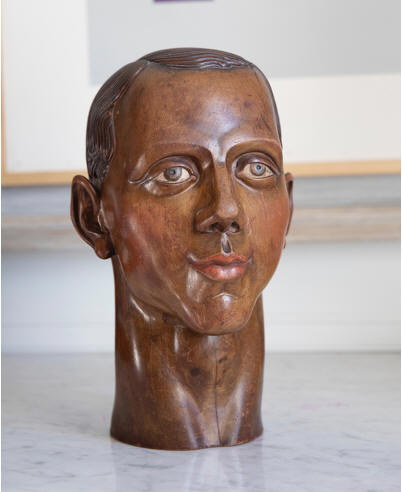

Partner William Plomer
Queer Places:
Eton College, Windsor, Windsor and Maidenhead SL4 6DW
36a Abercorn Place , St Marylebone, London, England
 Anthony
Butts (March 15, 1900 - May 16, 1941) was an English painter, brother of the
writer Mary Butts and
companion of the writer William
Plomer, and fictionalised by him in Museum Pieces, 1952. Vividly described by
Stephen Spender in World Within World, 1951. The English novelist William Plomer’s wealthy friend, Anthony
Butts, took him to Europe in May 1930. When they reached Berlin a friend of a
friend showed them around the gay scene. In his memoir At Home (1958), Plomer
would write of pre-Hitlerite Berlin: ‘the then notorious night life was
something well worth seeing. Blatant impudicity on such a scale was certainly
exciting to youthful senses, but there was something desperately sad about it
– and at times something grotesquely funny.’ At times, he found, it was
neither sad nor funny. In a club called The Sign of the Cross the floor-show
included an enema display that he thought simply disgusting. On one occasion,
Plomer and Butts encountered André Gide,
‘apparently taking his pleasures with his usual seriousness’. The travellers
moved on to Venice and then Athens, but Plomer would later go back to Berlin
in his fiction.
Anthony
Butts (March 15, 1900 - May 16, 1941) was an English painter, brother of the
writer Mary Butts and
companion of the writer William
Plomer, and fictionalised by him in Museum Pieces, 1952. Vividly described by
Stephen Spender in World Within World, 1951. The English novelist William Plomer’s wealthy friend, Anthony
Butts, took him to Europe in May 1930. When they reached Berlin a friend of a
friend showed them around the gay scene. In his memoir At Home (1958), Plomer
would write of pre-Hitlerite Berlin: ‘the then notorious night life was
something well worth seeing. Blatant impudicity on such a scale was certainly
exciting to youthful senses, but there was something desperately sad about it
– and at times something grotesquely funny.’ At times, he found, it was
neither sad nor funny. In a club called The Sign of the Cross the floor-show
included an enema display that he thought simply disgusting. On one occasion,
Plomer and Butts encountered André Gide,
‘apparently taking his pleasures with his usual seriousness’. The travellers
moved on to Venice and then Athens, but Plomer would later go back to Berlin
in his fiction.
Anthony Bacon Drury Butts was the son of Captain Frederick John Butts and Mary Jane Briggs. The Butts were an old Norfolk family. He attended Eton College. Painter and pupil of Sickert who lived most of his short life in Fitzrovia, London and who purported to have been descended from Henry VIII and Bacon. He committed suicide aged 40 by throwing himself out of a window in Marble Arch on 16 May 1941.
On Butts' appearance, Spender wrote: 'He had eyes of a china blue which stared out of their facade of a slapstick face, with a solemnity which would suddenly collapse into laughter'. Spender added: 'He was one of those extremely talented people who do not know how to direct their gifts. During one promising period of life he became a painter, and was for a time a pupil of Sickert.'
In her biography of Elizabeth Bowen, Patricia Laurence notes that Butts painted the novelist's portrait in 1938. Laurence writes that Bowen 'found him fascinating and admired his wildness and unique way of talking, particularly about his family: he was descended from Thomas Butts, a patron of William Blake. After Woolf's suicide in March, 1941, and that of Butts' two months later, Bowen confided to Plomer that they were the only two people she missed'.
My published books: